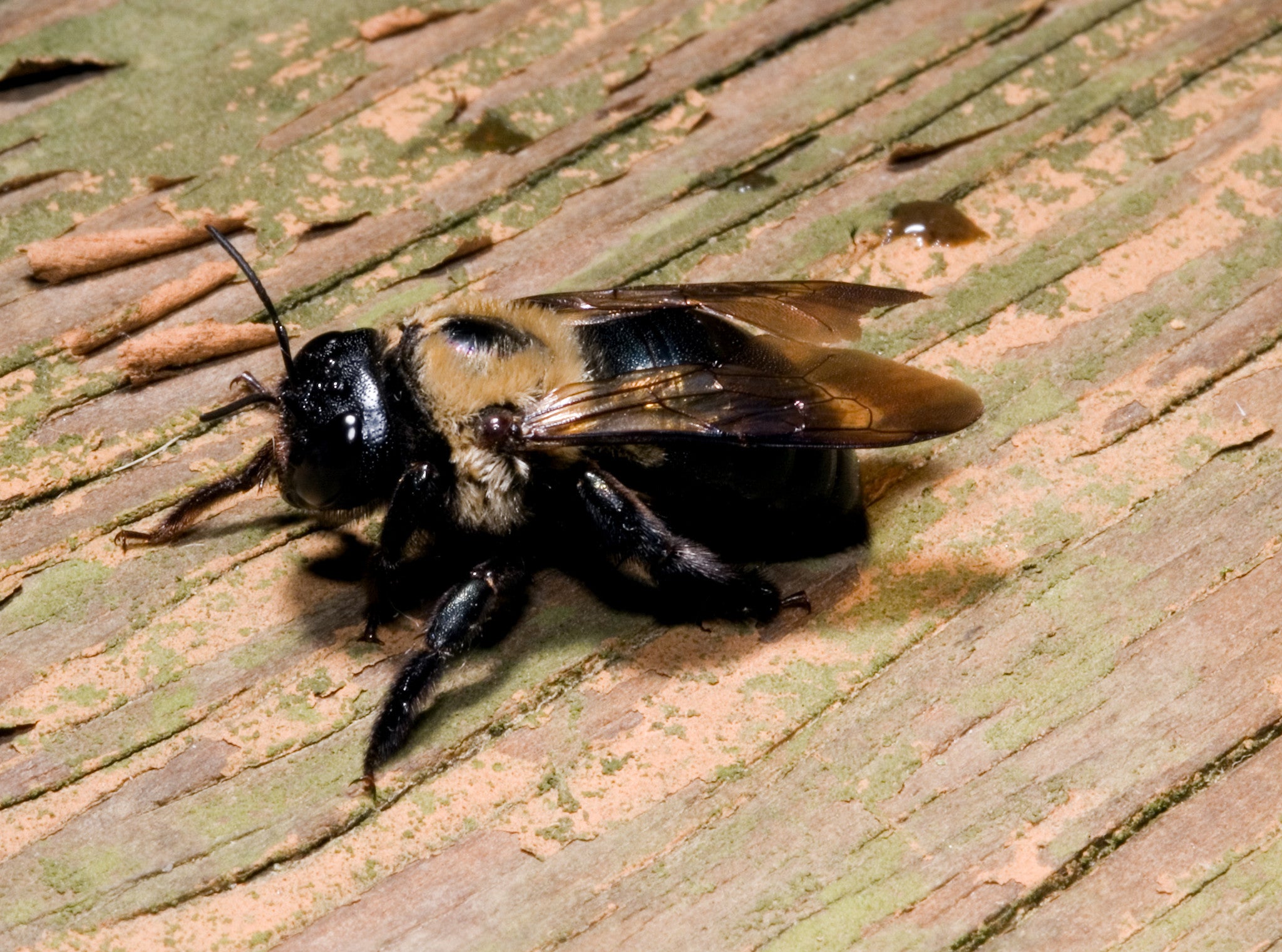Insects That Prey On Your Log Home – And What To Do About Them!

Your log-home is a very tempting morsel for any number of damaging insects who will make it their home and their food source if allowed to do so. A whole host of troublesome insects that prey on your log home are out there and unless you know what to look for and know how to treat any invasions, your home’s value and structural integrity can be at stake. Being proactive is the name of the game since seasoned wood, dry wood, and wet wood and, of course, rotting wood are all potential targets for creeping, crawling, flying things.
What Are The Insects That Prey On Your Log Home?
This short list is, by no means, exhaustive, but will give you a feel for what you could be up against regarding insect invasions.
1: Powder-post Beetles:
Powder-post beetles are wood-boring insects and have a nasty habit of re-infesting seasoned wood via future generations that will expand the proliferation. Powder-post Beetles will continue their mayhem for years, if not stopped. The eggs of Powder-post Beetles are laid on only unfinished wood since the larvae can’t bore through paint or varnish. 2nd only to termites in terms of their destructive capabilities, Powder-post Beetles make no distinction between softwoods and hardwoods including maple, oak, ash, pine, fir and spruce--wooden beams, floors, cabinets and furniture are all on their menu.
Treating infestations as well as preventing them requires the use of borate insecticides. Bora Care and Timbor are two well-known products for this use; and, when in liquid form, the product is quickly absorbed into the wood’s surface.
2: Carpenter Bees:
Carpenter bees would love to utilize your logs as a sanctuary for their nests. If you notice a round hole about a ½ inch in diameter, chances are good that an expansive tunnel system is just beyond that opening. Logs will be weakened and entrance points will invite water to enter which will result in rotting wood. Future generations of Carpenter Bees will thrive in the tunnel systems and pick up where past generations left off—the damage will simply multiply.
Pro-active prevention requires that wood is covered with heavier, thicker finishes. To repair any damage, use exterior caulk and/or 3/8” to 1/2” plugs along with botanical insecticides, such as EcoPCO WP-X, which are plant-based and are safer than more conventional insecticides. Treating in and around the entrance hole and then blocking the hole with caulk or a plug will provide effective prevention. Dust insecticides are simply puffed into the tunnels with the entrances which are, then, plugged.
3: Termites:
If termites are present in a log home, there is one bit of good news: the good news is that they or their ravaging is far more visible than it would be in a traditional home. A small bore hole with a tiny pile of sawdust is a dead give-away that your battle has begun, but with log-homes, spot treatments can be very effective.
Here are a few proactive measures you can take against these voracious critters:
- make sure there is at least 8” of distance between the ground and the first layer of logs. If concrete forms that 8”-plus separation, that’s even better since termites have difficulty scaling concrete.
- do not bury any wood debris near your log home during construction. It will, at some point, become wet and termites will be drawn to it.
- if your home has a continuous, poured foundation, encircle your home with a 6”-layer of barrier sand, also known as ‘Termite sand’.
- make sure your logs, prior to construction, were treated with borate—a very effective preventative.
If termites exist in your home, utilizing the expertise from a pro is the only effective solution.
4: Carpenter Ants:
Carpenter ants love living between the logs of a home where water seepage or condensation is present. These determined little guys don’t actually eat wood but chew it and discard it; and the appearance of course-looking sawdust material is a hint you’ve been hit! Growing colonies will cause serious damage to wood structures.
Eliminating all moisture problems and stacking wood off the ground and away from the home will help to minimize any infestations. Additionally, borate treatments as liquid or granular-form, can be placed on the ground which will result in the poison being taken back to the nest. Terro is an ant killer containing an active ingredient known as sodium tetraborate decahdrate; and is very effective. PeneTreat is another option that is a borate-based wood preservative. It creates a ‘shell’ coating to keep carpenter ants and a host of other pests completely at bay.
5: Cluster Flies:
Flies—perhaps the most-despised insect--are disease carriers where millions of bacteria are harbored on one single body. Your log home could have hundreds of fly-access areas that you are not even aware, with part of the problem being that their points of entry are so small.
Cluster flies can make their way into an opening the thickness of a dime. Cluster flies should be dealt with through the use of professionals. A specialized sealant is injected into openings as small as the end of a ballpoint pen. Cluster flies can invade your home by the hundreds if they and their points of entry remain undetected for too long.
Insects of all kinds can not only ravage and plunder your log-home, but rob you and your family of precious peace and sanity. Educate yourself on what to look for, take any precautionary measures and call the professionals when necessary. With the types of advanced products that are available, you will control those insects instead of their controlling you!




